Small parrots: species, how long do they live and how to care?
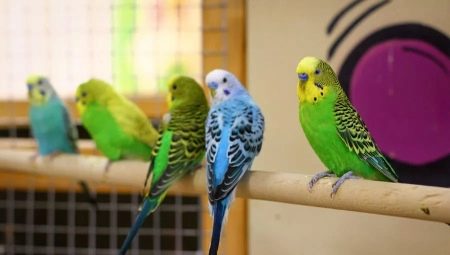
In the 21st century, you can have almost any animal as your pets: a raccoon or a fox, a tiger cub or a snake. What can we say about the usual fish, hamsters, cats or dogs. Parrots are also still in great demand.
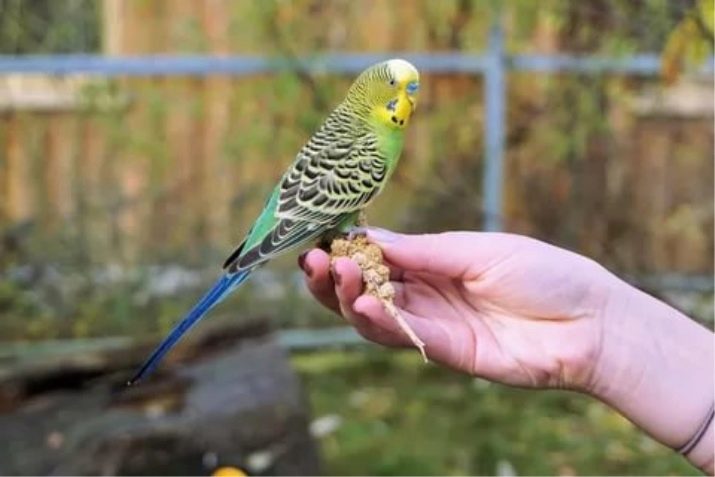
Varieties
Small parrots are unpretentious in care, it is interesting to watch them not only for children, but also for adults. In addition, they are fidgets and are interested in everything around them, they love to play and they can be taught to talk.
The following types of parrots are considered the smallest:
- woodpeckers;
- lovebirds;
- wavy;
- passerines.
The most popular are lovebirds and budgerigars, but we will start by getting to know the woodpecker parrots.
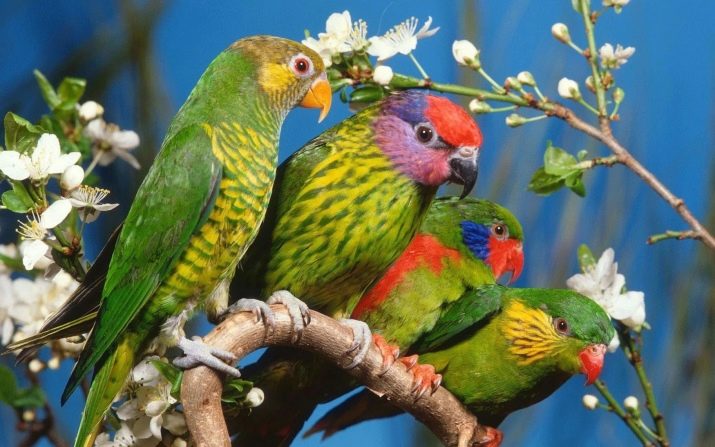
Woodpeckers
These birds are among the smallest parrots in the world. And all because their maximum size reaches 15 cm, and their weight is less than 15 grams. It is quite simple to recognize them by color: top - green, bottom - yellow; the very edge of the feathers is bordered in black. Males are much brighter than females.
The tail of this bird also has a different color: the upper part is blue, and the lower one is black. It is short, straight or slightly rounded, which resembles the tail of a woodpecker. The beak of this bird is narrow, curved, with ribs above it.

Birds love figs, mushrooms, seeds and small insects. In total, 6 subspecies of these parrots are known: the woodpecker parrot of Bruin, Finsch, Schlegel, Salvadori, Meek, Sklater. Natural habitat is New Guinea, Indonesia and the Solomon Islands.
Birds quickly move along tree trunks with the help of jumping, leaning on their tails, they like to live on the tops of trees.
At home, they are friendly, they quickly get used to the owner and a new place of residence.On average, they live long enough - about 15 years.
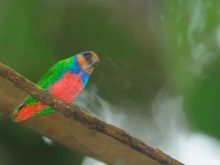
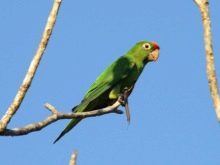
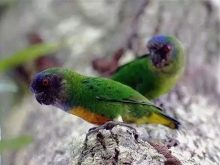
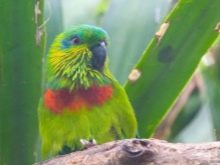

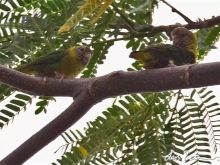
Lovebirds
These parrots received such an unusual name due to the fact that the male and female do not part for a long time. These small birds are larger than woodpeckers, but not by much. The body is 17 cm long, the tail is 6 cm long. The beak is large. The birds are predominantly green in color; a characteristic feature is the bright color of the neck, chest and head (more often yellow, red, blue).
According to the color of the head feathers, the species is divided into 9 subspecies: masked, black-cheeked, Fisher, strawberry-headed, rosy-cheeked, black-winged, red-faced, Madagascar and green-winged. A tropical species that lives near the water, brought from the island of Madagascar and from Africa. Life expectancy is 15-20 years.
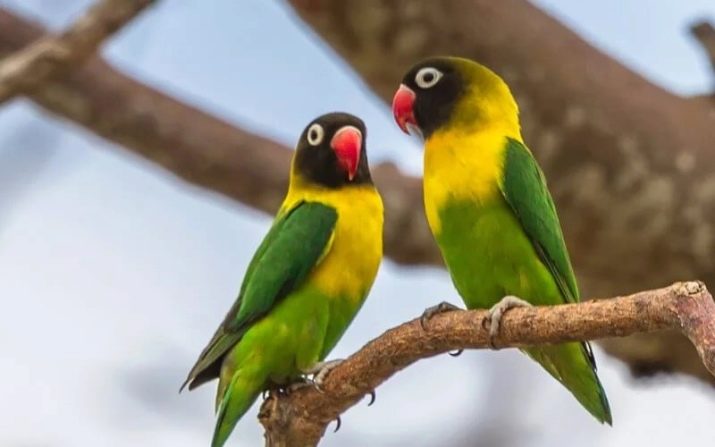
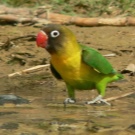
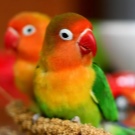
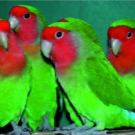
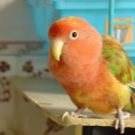
In captivity, they are curious, they like to try everything on the beak, take sun baths and water procedures. They cannot learn a large number of words, but they are very sociable. It is better to settle them in pairs, they suffer alone and do not feel well.
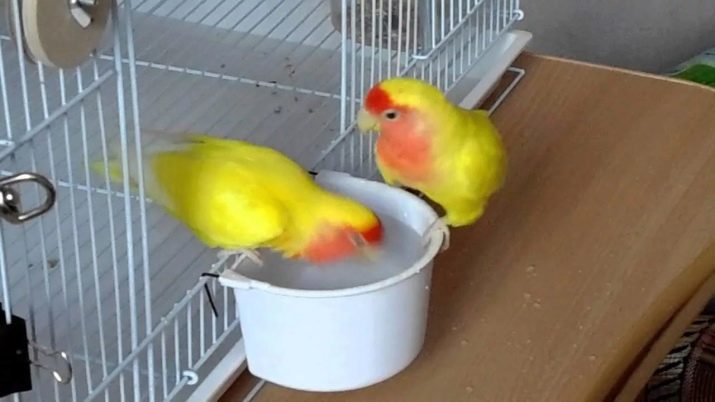
For the features of budgies, see the next video.
Wavy
Most often, birds with white-blue or green-yellow feathers are found, but there are other options bred by humans: pink, gray, purple. The head and throat are yellow. This species is larger than the previous two: weight - up to 45 grams, length - up to 25 cm, wingspan - 11 cm.The tail is long - up to 10 cm.
Wavy black lines are lined with feathers on the head, that's why their name came from. The beak is large, strong, strong, in it they carry food, water, small objects.
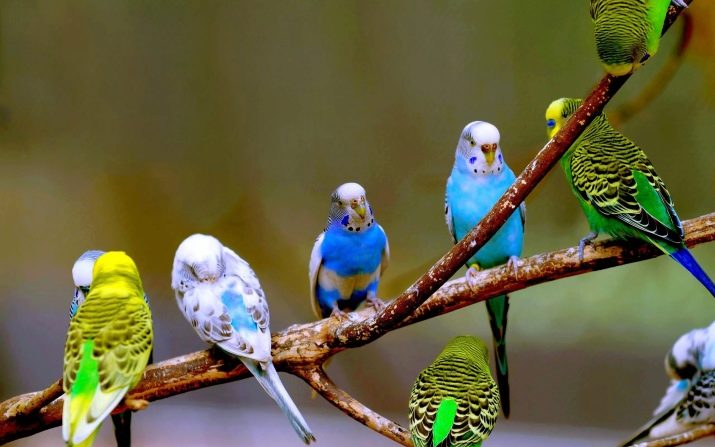
This variety was brought from Australia. In nature, they live in eucalyptus groves, on the territory of savannas and semi-deserts near water bodies. They prefer to search for water and food in large flocks.
They are chosen as pets due to the innate friendliness, unpretentiousness, quick wit and sociability of birds. They remember human speech well and quickly, they are able to reproduce long words and phrases. With good care, they live on average 10-15 years, in the wild - about 6 years.
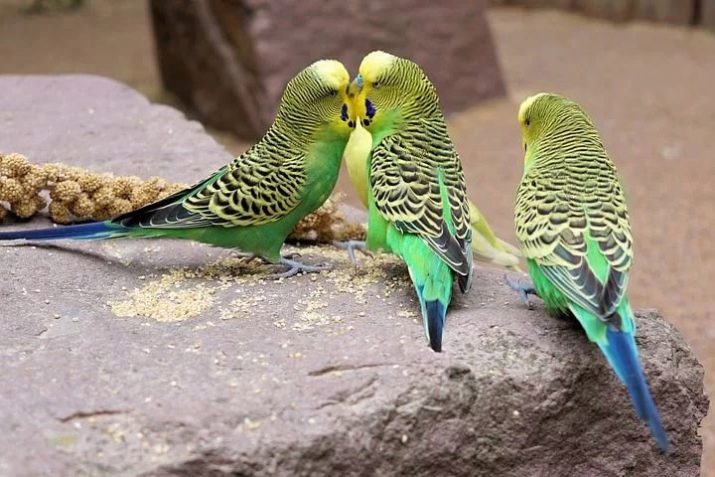
Passerines
Outwardly and in size, they are similar to sparrows, which became the basis for the name. They feel good both in a small space and in a large aviary. The length is slightly longer than that of woodpeckers - up to 14 cm, weight - 30 g. The color is bright, various shades of green, yellow, blue. The tail is short, often rounded. The beak is thick, wide, small.
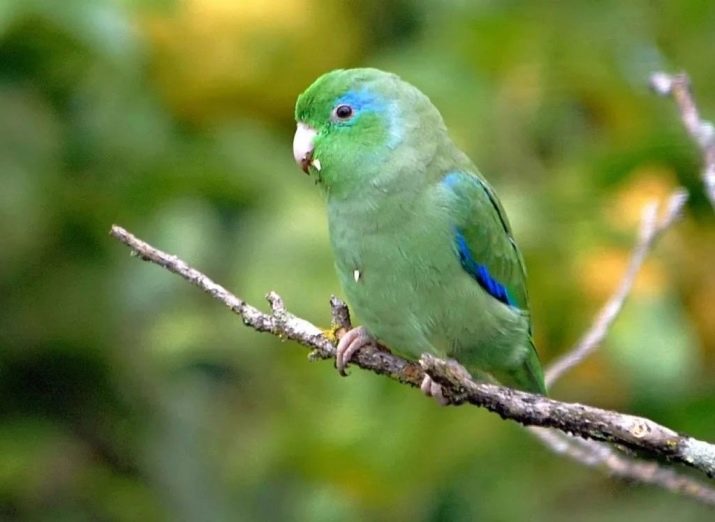
Their habitat is the mangrove forests of America (both North and South), as well as the territory of Colombia, Brazil, Venezuela, Paraguay.
They live at home for 20 years, they get used to and become attached to the owner quickly, they are friendly, inquisitive, they look pretty.
Features of keeping at home
The parrot is an exotic bird, accustomed to warm climates and tropical forests. This means that deciding to grow a small parrot at home, you need to create comfortable living conditions for him so as not to destroy this interesting bird.
Cell
Of course, you can keep a parrot without a cage, but then be prepared to remove feathers, waste products from everywhere and constantly hide important papers and small items. In addition, the pet can get hurt or fly out the door or window.
Therefore, it is still better to prepare a spacious rectangular cage so that the parrot can fly from perch to perch and lead an active life. As for practicality, the best option is with a retractable bottom.
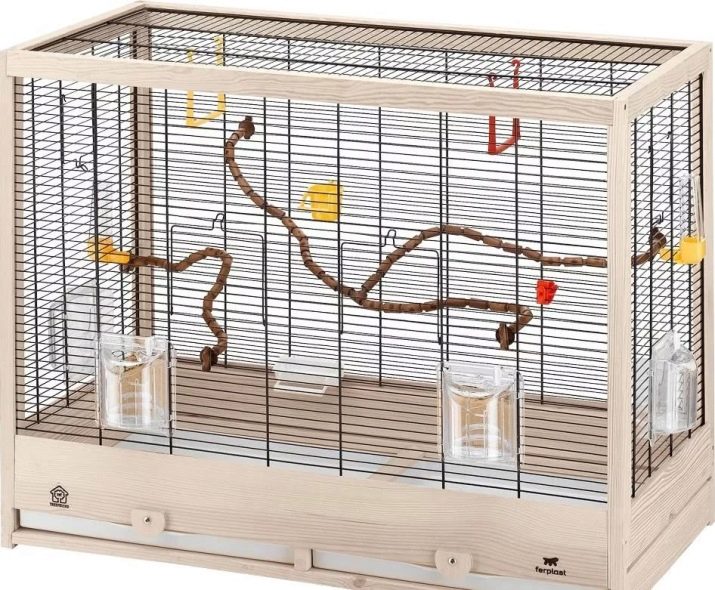
The cage must have a feeder (for dry and wet food) and a drinker, several perches or twigs at different distances and heights (preferably natural, but not coniferous branches), toys... The number of items depends on how long the bird will sit in the cage. Toys can be purchased at a specialty store, or you can make your own.You can also put a cup with small stones, this is necessary in order to clean the stratum corneum from the beak and claws.
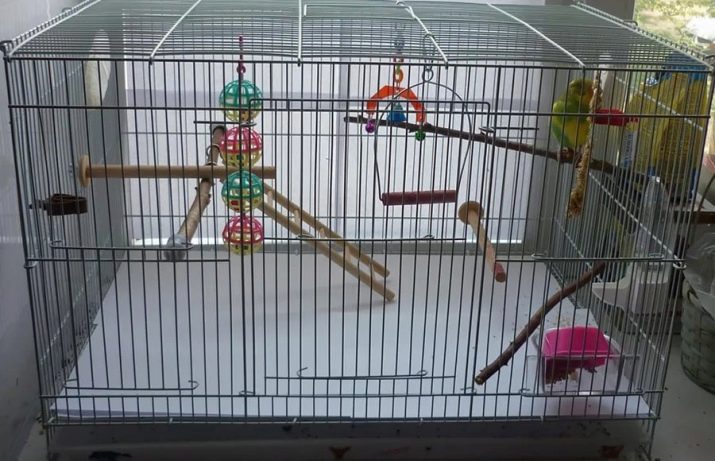
Feed
Parrots have a very fast metabolism, so under no circumstances should you go on a hunger strike. The best option would be food in the public domain, especially if there is more than one bird. The diet must contain animal food (cottage cheese, boiled eggs), oat seeds, sunflower seeds, porridge in water without salt, insects (ant eggs, bloodworms), fresh vegetables and fruits, herbs.
There is also a list of foods that should not be given to parrots: salt, sugar, spices, bread, fish, meat, processed vegetables and fruits, nuts, herbs, dairy products, food from the human table.
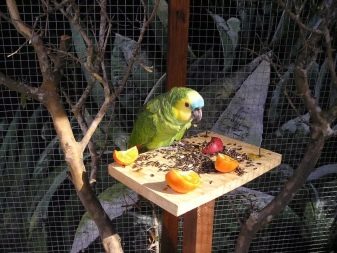
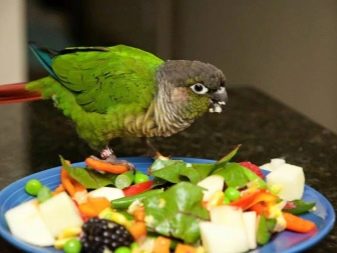
Water
There should always be clean fresh water in the drinker, it should be changed daily and as it gets dirty.
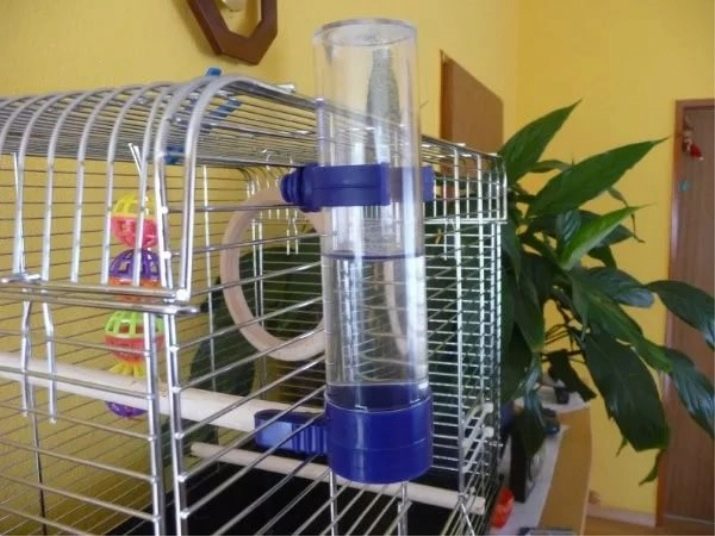
Causes of diseases
Unfortunately, it so happens that due to careless care, birds get sick and die. The following tips will help you avoid this.
- Like other living things, small parrots are susceptible to infection and disease. At the first symptoms and behavioral abnormalities, you need to seek help from a veterinary clinic.
- Besides, outside the cage, pets can be injured, drowning in a vessel with water, hitting a mirror or window frame, get burned or tangled in curtains, get stuck in a box. They can be hunted by other pets (especially cats), children can accidentally squeeze the feathered, not calculating the strength.
- If there are a lot of birds in the cage, you need to make sure that they do not peck each other, and in the same space there were birds of the same temperament. Young animals or cowardly individuals are often pecked.
- Pet's curiosity can also lead to dire consequences, one of which is poisoning... Having inhaled poisonous fumes (the risk zone includes cleaning agents with an active chemical composition, glue or polyurethane foam, household gas, oil paints, poisonous plants - ficuses, ferns), the bird gets a burn of the esophagus. Poor food contains substances that can harm your pet.
- Stress... Parrots have a very weak heart, so they don't need emotional outbursts. Moving, fright or longing from lack of communication - all this slowly kills these fragile creatures.
- Conditions of detention. Cold air, high air temperature, lack of clean water, poor food, dirt in the cage - all this leads to the rapid death of the pet. It is important not to forget to take care of them, change the water and clean the cage in time.
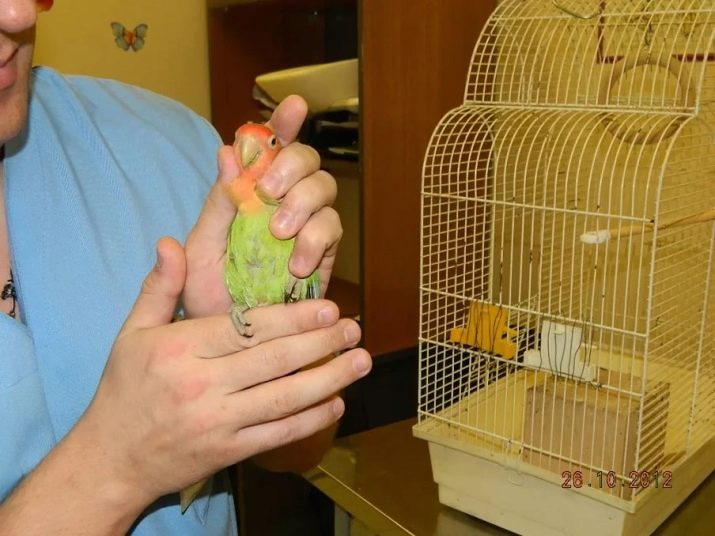
In general, they are cute, small, funny, inquisitive, sociable, friendly, active pets. Different habits and characteristics of each breed will help you choose a bird to suit your desires. You can watch them for hours, chirping or playing about something.
The undoubted advantage of these birds is that small parrots can learn to talk, just spend a lot of time with the pet.









